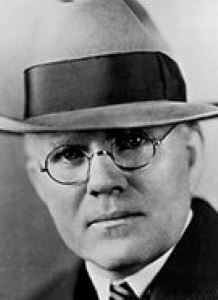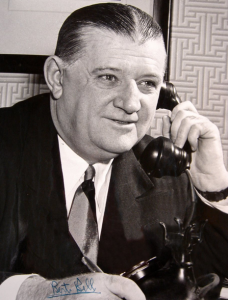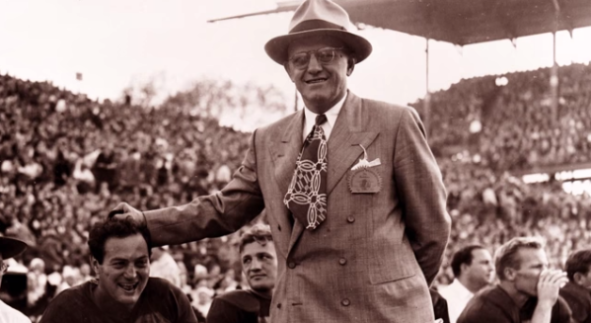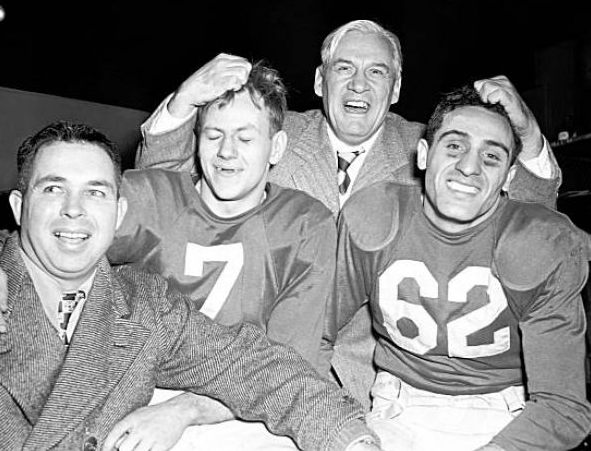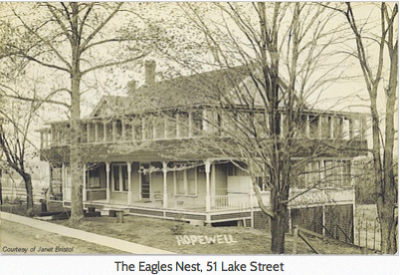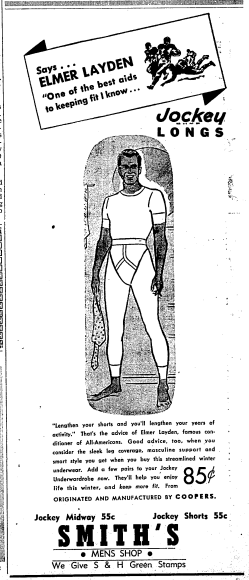In the summer of 2000, his first full year as the Redskins’ owner, Dan Snyder broke with tradition and relocated training camp from Frostburg, Md., to the team’s facility in Ashburn, Va. My angst drove me to whip up this nostalgic piece on preseasons past:
For coaches [in the NFL’s early years], training camp was get-tough time. In 1939, Hall of Famer Ernie Nevers came back to coach the Cardinals and decided to send the players a message by burning their gym shorts and sweat suits — usually worn for about half the preseason practices.
“Shorts,” he said disgustedly. “I’ve never seen anybody play in them. This is football, not tennis. We’ll wear pads today, tomorrow and every day throughout the season.”
In the good old days of the ’40s and ’50s, the train would leave Union Station in mid-July, just as Washington was beginning to wilt. The “Redskins Special” it was called. On board were owner George Preston Marshall and his retinue — team officials, support staff, coaches, players — not to mention wife Corinne Griffith, the former silent screen star, and her miniature French poodle, Demitasse.
The Redskins were headed west to training camp — Los Angeles usually. And to make sure the team’s adventures got proper newspaper coverage, Marshall invited all the scribes along, free of charge.
En route to the coast, a trip that took four days and three nights, the train stopped and picked up more players in Chicago, Kansas City, Amarillo (Texas), and Albuquerque (N.M.). Everybody ate, slept and carried on in private cars assigned to the club.
At night, Marshall, who loved trains as much as he hated planes — and knew all kinds of arcane facts about them — would hold court in his pajamas. “He’d ask, for example, if anyone knew what the standard gauge was for most railroads in the country,” Lee Hutson wrote in More Than a Game,
knowing full well that no one did know, and knowing but dismissing the fact that no one cared. He’d then say that it is 4 feet, 8 1/2 inches, adding, as a tease, that it was that width because that was the distance between the wheels of a Roman chariot. Now who could resist asking what the Roman chariot has to do with the American railroad?
The question would of course be asked, and Marshall would look around the room with his expression of I’m-glad-you-asked-that-question, and he’d continue. When the Romans occupied the British Isles a couple of thousand years ago, they brought along their chariots, and the chariot wheels were indeed set 4 feet, 8 1/2 inches apart. After a time, the wheels wore ruts in the roads, and any Briton who wanted a ride with a minimum number of neck-breaking jolts per mile was wise to build his wagon or cart with wheels that coincided with the ruts. When, centuries later, the British built the first railroads, they laid the rails along the paths of existing roads, and the ruts were a convenient place to lay the track. And since the earliest American steam locomotives were manufactured in England, the wheels were set apart the same distance as those on the ancient Roman chariots.
For 21 years, beginning in 1941, the Redskins trained in California. It was Marshall’s kind of place. The weather was idyllic — and he and Corinne could hobnob with Hollywood types while coach Ray Flaherty and his successors were flogging the team into shape.
In 1946, the Rams relocated from Cleveland to L.A., and every summer the two clubs would play a charity game at the Coliseum. It quickly became a very big deal; in ’50 and ’51 they drew more than 90,000.
After five weeks in California, the Redskins would pile back on the train and travel around the country, completing their exhibition schedule. One year, 1952 to be exact, the team left Washington for the West Coast on July 5 and didn’t return for their home opener until October. (The first two regular-season games were on the road.)
That’s a lot of togetherness. You really had to like your teammates to play pro football back then.
* * *
Fast forward to the present. It’s Monday afternoon at Redskins Park, and Steve Baldacci, the team president, is giving reporters a tour of what he and Dan Snyder hope will be the training camp of the future. The Redskins have broken their contract with Frostburg State and decided to hold camp at their practice facility in Ashburn, Va.
Instead of staying in a college dorm, the players will be lodged in a nearby hotel. Instead of being put through their paces in the cooler climes of Western Maryland, they’ll be sweating it out in Northern Virginia.
Why are Snyder and Baldacci bucking tradition? To market the team better and make it more accessible to the fans, they say. To which others reply, “And to fatten their wallets.” It costs fans $10 to park and, in an unprecedented move, $10 to watch practice (children 12 and under will get in free) — and that’s before they set foot in the refreshment and merchandise tents. If the club can fill the bleachers every day — there’s seating for about 6,500 — camp could be very profitable indeed.
But don’t forget, Baldacci says, included in the price of admission is the NFL Experience, an interactive theme park in which fans can attempt a field goal, run a down-and-out and get timed in the 40-yard dash. “Generally,” he says, “it costs $15 when it goes on tour. Here it’s free once you pay $10 [to get in].
Snyder spokesman Carl Swanson gently corrects him. “You meant to say it costs $15 at the Super Bowl and $10 when it travels.”
Baldacci has a habit of playing fast and loose with the facts. He continues to insist, for example, that the Redskins are not the first team to charge for training camp workouts, despite evidence to the contrary.
A little later in the tour, he comes out with this gem: “Most people had to drive 3, 3 1/2 hours to Frostburg. They paid $40 or $50 for gas and they probably stayed overnight.”
For the record, it takes about 2 1/2 hours to drive to Frostburg from Montgomery County. (From personal experience, you can get up and back on a tank of gas — about $20.) Most people didn’t stay overnight. It was a day trip for them.
There’s no question this Redskins camp will attract more fans than ever before. (The crowds at Frostburg and Carlisle, Pa., were small except for scrimmages.) But at what price? Will Darrell Green develop carpal tunnel syndrome from signing so many autographs? Will some players find it too easy to get into off-field trouble? Will the practices in the afternoon heat wear the team down?
There’s some precedent for that. In 1938, the year after they won their first title, the Redskins also held their training camp in Northern Virginia. It was an absolute disaster.
“It was so hot,” Hall of Famer Wayne Millner once recalled, “I used to buy a cake of ice at night, put it in a bowl and set up an electric fan behind it to blow cool air toward my bed. There was no air conditioning, and we just didn’t get much sleep. A major factor in a good training camp is rest so that players will be at a physical peak for the contact work. We always seemed to be dragging.
“That’s when Mr. Marshall decided he’d go to a cooler climate and picked a small teachers’ college in Cheney, Wash., for our training site in 1939.”
* * *
It’s hard to pin down exactly when this tradition began, this tradition of going away to training camp. A recent book on the early days of the NFL, When Football Was Football, credits the Chicago Cardinals with holding the first out-of-town camp — in Coldwater, Mich., in 1929.
But that can’t be right. The New York Giants trained at Lake Ariel in the Poconos in ’26, and the Rock Island (Ill.) Independents might have blazed the trail even earlier. According to their coach, the legendary Jimmy Conzelman, “before the 1922 season we went out of town to a place resembling today’s training camp.”
Whatever the correct answer, it wasn’t until the ’30s that out-of-town camps became commonplace. Their benefits were obvious: a minimum of distractions, an opportunity for the players to bond, more accommodating weather. Many teams trained in Wisconsin in those years. At one point, half the clubs in the league were up there — the Bears in Delafield, the Cardinals in Waukesha, the Giants in Superior, the Steelers in Two Rivers and the Packers at home in Green Bay.
Superior was pretty far from civilization — “a two-day train trip,” ex-Giant Jack Doolan says. “If you were cut up there, you were really cut.”
During the 1938 preseason, the Packers and Steelers (then the Pirates) got together and played a doubleheader, the only one in NFL history. Coaches Curly Lambeau and Johnny Blood wanted to get a good look at their squads before making final cuts, so they subjected their teams to two 40-minute games one Friday night in Green Bay. The opener ended in a 7-7 tie; the Pack took the nightcap 17-0.
Yup, the training camps in that era could be pretty rugged. You see, the players didn’t have the minicamps and summer schools and offseason conditioning programs they do today. Camp was where they reacquainted their bodies with fitness.
“We didn’t have any [organized] preseason training,” an NFL player from the ’20s once told me. “You got yourself in shape. I lived right below Easton [Pa.]. I would run in the evening, maybe jog three or four miles along the Delaware [River], then I would swim back.”
For coaches, training camp was get-tough time. In 1939, Hall of Famer Ernie Nevers came back to coach the Cardinals and decided to send the players a message by burning their gym shorts and sweat suits — usually worn for about half the preseason practices.
“Shorts,” he said disgustedly. “I’ve never seen anybody play in them. This is football, not tennis. We’ll wear pads today, tomorrow and every day throughout the season.”
It didn’t help much. The Cards finished dead last with a 1-10 record.
Nobody was more of a slave driver than Jock Sutherland. His 1946 training camp with the Steelers is infamous for its brutality.
“Let’s get rid of the loafers first,” he instructed his staff. “Work them hard. The ones we don’t want will quit early, and we won’t have to waste time with them.” Often, the team scrimmaged twice a day. It was the only way, Sutherland was convinced, “to find out who’s and what’s what.”
Bob Drum of the Pittsburgh Press, a former college player, worked out with the team one day. “There will be only two kinds of men on the Pittsburgh Steeler roster this fall,” he wrote, “those who are in shape and those who are dead.”
(Sutherland’s hard-boiled approach worked better than Nevers’, though. The Steelers stayed in contention in the Eastern Division until the next-to-last week.)
Another effective conditioning device in the early days was the “fat man’s table.” If a player was carrying too much weight in camp, he was banished to the low-calorie corner of the dining hall, there to dine on greens instead of red meat. The Lions started such a table in 1949, much to the amusement of the Chicago Tribune.
“Four of the Lions are currently eating their excess poundage off there,” the paper reported. “They are tackles Russ Thomas (268), George Hekkers (258) and William Sims (265) and guard Les Bingaman, the ex-Illini (262).
“Mrs. Karen R. Lurting, a former Army nurse, is in charge of the groceries for the special table, and when any of the fat men complain of imminent starvation, she has a ready answer.
‘“The table is served about 4,000 calories a day per man,’ she says, ‘and that’s what we served combat troops during the war.’”
(George Somers, a 300-pounder with the Eagles, had a great line about fat man’s tables. “It’s not that I mind taking off the weight,” he said. “But I don’t like this business of eating only three times a day.”)
Bingaman was one of the biggest men ever to play pro football. He weighed 349 1/2 pounds by the end of his career in 1954. His last Lions coach, Buddy Parker, did him no favors by allowing players to monitor their own weight.
“In training camp, the coaches always had an honor system,” former Lion Vince Banonis says. “You weighed yourself in every morning and you weighed out after practice — twice a day. Les had himself down for 289 or whatever. But one day the honor system was no longer and George Wilson, the assistant coach, was at the scales. Les stepped aboard and the thing hit 300, which was as far as it would go. So they took him downtown to the granary and weighed him there . . . and he was 349. That was the end of the honor system.”
When the Cardinals trained in Waukesha in the ’40s, they didn’t need a fat man’s table. The field they practiced on at Carroll College was “like an oven,” ex-tackle Chet Bulger says. “The college was built out of limestone, you see, and they put the field down there where the limestone had been taken out. We got cooked on that stone. . . . There was one lone tree beside the practice field, and everyone used it for support and to throw up on during practice.”
* * *
Training camp back then wasn’t all drudgery, though. At Cranbrook School in suburban Detroit, where the Lions once trained, Bill Fisk used to fish for trout with teammate Bob Winslow. “It was a beautiful setup,” he says. “Nice park, nice practice field, out in the country. I’m a fisherman, so after practice or early in the morning before practice, Bob and I would go out there and fish a little bit in the pond. The fishing was great. We’d catch trout and give ’em away.”
Another fish story, this one from ex-Eagle Jack Ferrante: “Steve Van Buren had a little boat at our training camp at Saranac Lake [N.Y.], and some of us used to go fishing. One time the boat got out of control, and Alex Wojciechowicz went flying; he wound up with a big gash on his face. So we kept him away from [coach] Greasy [Neale], and on the first play from scrimmage the next day Wojie pretends like he got hit, you know? And coach never knew what happened.”
The Eagles were the first team to own their own preseason training facility. Owner Lex Thompson bought a lodge in the Adirondacks in 1946, not far from Lake Placid, and turned it into a place — dubbed the “Eagles’ Nest” — for the club to train.
Everybody slept in bunk beds in the same room — except for Van Buren and Wojie, the two stars, who had their own quarters. The team worked out at a high school about a quarter of a mile away.
Speaking of those bunk beds, the Eagles had a player in the late ’40s named Art Mergenthal, a guard out of Notre Dame, and one night at about 1 o’clock he had a nightmare. . . .
“He’d had a bad war experience,” former Eagle Al Wistert says. “And he started bouncing in his upper bunk, bouncing between the bunk and the ceiling, and screaming at the top of his lungs, ‘They’ve got me surrounded. They’ve got me surrounded. They’re gonna kill me.’
“All this comes out of the black of night. And Art Macioszczyk [pronounced Ma-CHOSS-chuck], who was sleeping below him, jumped out of bed and started running between the bunks down to the end of the dormitory. Only he forgot the hallway wasn’t straight; there was a little right turn you had to make, and he ran smack into the wall and almost put a hole in it. He fell backward, jumped up and kept on running.”
The Saranac Lake area was dotted with tuberculosis sanitariums — thousands of people went there for the cure — and ex-Eagle Vic Sears remembers that “a bunch of girls from the TB sanitariums were always lined up on the field, watching us practice. . . . I just loved it. You could go to a movie downtown or go out and swim in the lake or something. It was a wonderful atmosphere. I’m going to take a ride up there sometime just to see the old place.”
It’s doubtful any of the current Redskins will feel nostalgic in their old age about training at Redskins Park. There’s no lake, so there won’t be any fish stories. And there’s no college campus, so there won’t be any dorm stories. There certainly won’t be any scenes like the one the Chicago Daily News described in 1942:
Delafield, Wis., Aug. 14 – No baby, not even a scion of royalty, ever had two more formidable guardians than has Jane Manske Jr., infant daughter of ‘Eggs’ Manske, former end for Northwestern and the Bears and now Lt. [JG] Edgar Manske, United States Navy.
Jane Jr. and her mother, the former Jane Fauntz, swimming and diving star, are summering here on the shores of Lake Nagawicka, where Mrs. Manske is swimming instructor and counselor at a girls’ camp. And if Mrs. Manske wants to leave her daughter for awhile at noon or in the early evening, when the Bears are away from their football drills, she doesn’t have to worry about the nursemaid problem. She merely turns Jane Jr. over to Joe Stydahar and Clyde “Bulldog” Turner.
It is a sight indeed to see first Joe and then Bulldog pushing the baby carriage around the St. John’s Military campus. And when they pause to chat with the other players, Jane Jr. coos happily at Danny Fortmann or Lee Artoe or George Wilson or some other 200-pound ex-teammate of her daddy.
The Redskins are convinced this training camp is the future, an idea whose time has come, and that may well be. Me, I’m kinda partial to the past.
PRIESTS, POOCHES AND ATOMIC BOMBS
Memories of training camp from the NFL’s early days:
● Training camp confinement can make anyone go a little goofy. When the Giants trained at Blue Hills Country Club in Pearl River, N.Y., in the ’30s, John Vesser says, “Johnny Dell Isola would get up in the morning and run all through the place stark naked. Johnny was like that, you see. That was his way of opening every day.”
● Rick Casares, an all-pro fullback for the Bears in the ’50s, had a training camp ritual of his own. Every morning he would walk his Yorkshire Terrier past owner-coach George Halas’ dorm room so the pooch could do his business in front of Papa Bear’s door. “I think he trained the dog,” Hall of Famer Stan Jones says, “. . . because there often was a little pile there.”
● Pat Summerall on his first training camp with the Cardinals in 1953: “We were working out at the University of Chicago before the season started. I noticed that the deserted stands looked strange, because they were covered in tar paper, and I realized: That’s where they had begun the research for the development of the atomic bomb. And I thought: This can’t be a very good start.”
● Chris Burford on the Dallas Texans’ training camp in Roswell, N.M., in 1962: “It was about 110 [degrees] in the daytime and 85 at night, with no such thing as air conditioning. The mosquitoes were so big that six or seven would come down and take off with one of our guys. It was too hot to sleep with a sheet, but you had to have one just to keep the mosquitoes off.”
● Ray Mathews on the Lions’ 1941 training camp: “That was the year [future Supreme Court Justice] Whizzer White was studying for the bar. And every night, boy, you’d hear that typewriter going. He always wore a green visor. He wore glasses, of course, but he also wore that green visor. Midnight, 1 o’clock, 2 o’clock in the morning, pounding away on the typewriter. But, boy, when he crossed that white line out there, he was a Jekyll and Hyde. He was mean — and tough. The toughest individual I can think of.”
● Don Kindt on attending nine Bears training camps at St. Joseph’s (Ind.) College in the ’40s and ’50s: “I spent so much time there I thought I was going to be ordained.”
From The Washington Times, July 21, 2000

